Blockchain
Deutsche Bank Blockchain Project Guardian
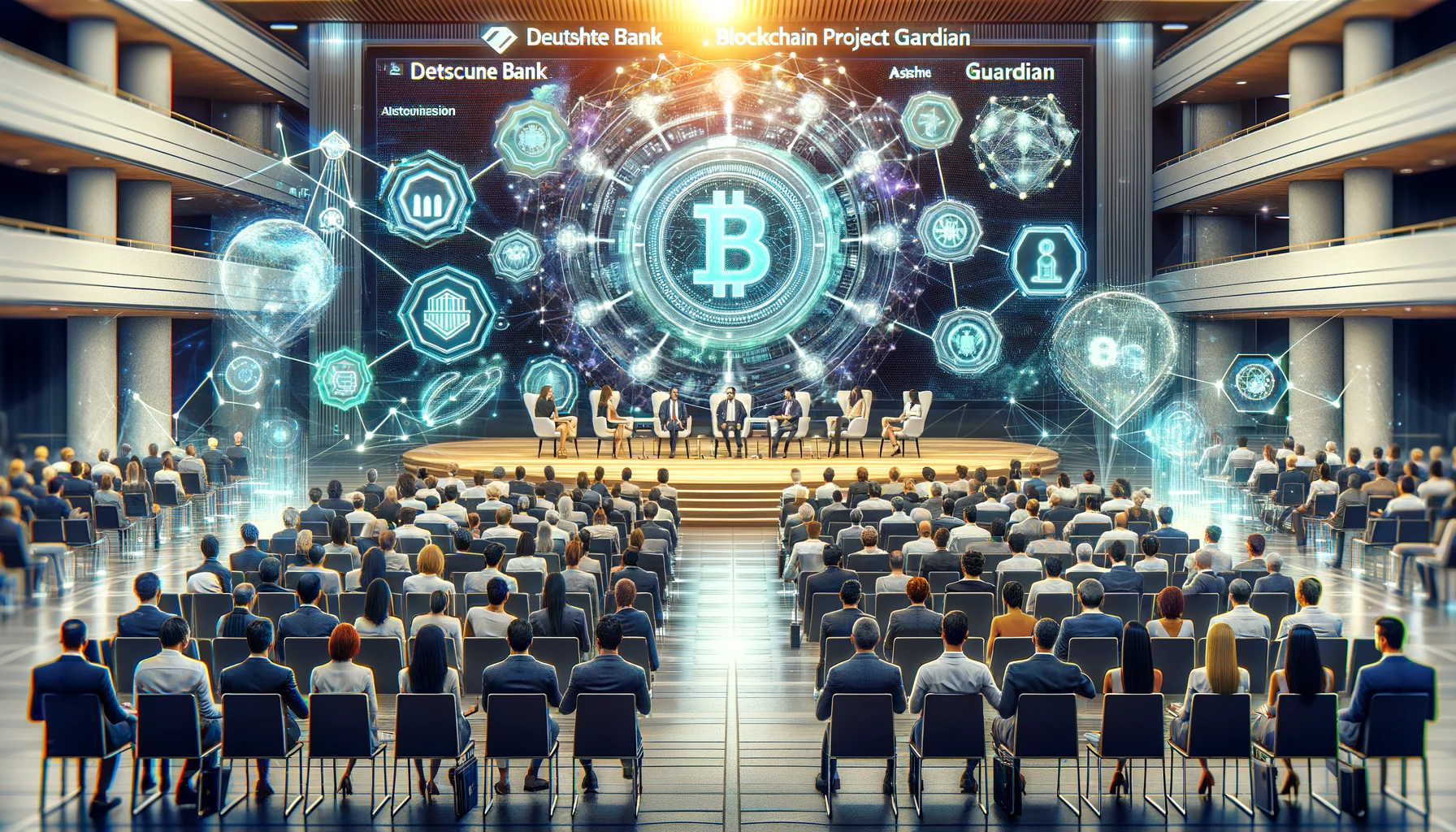
Deutsche Bank Blockchain Project Guardian is a groundbreaking initiative spearheaded by the Monetary Authority of Singapore (MAS). This project is set to explore the expansive potential of asset tokenization and decentralized finance (DeFi) within the financial sector.
This project is part of a larger effort by MAS to blend traditional financial practices with innovative blockchain technologies, aiming to enhance the efficiency, transparency, and security of financial transactions across various asset classes.
While MAS strongly discourages and seeks to restrict speculation in cryptocurrencies, we see much potential for value creation and efficiency gains in the digital asset ecosystem. This is why we are actively collaborating with the industry to foster a responsible and innovative digital asset ecosystem.
As we enter this new phase of Project Guardian, we look forward to collaborating with fellow policymakers and industry practitioners to jointly develop effective frameworks to guide the sound development of future financial networks.
Leong Sing Chiong, Deputy Managing Director (Markets and Development), MAS
Project Guardian, first introduced by MAS, serves as a collaborative platform that engages multiple top-tier global financial institutions, regulatory authorities, and technology companies.
The initiative focuses on experimenting with and understanding blockchain’s applicability in areas like asset management, fixed income, and foreign exchange.
For Deutsche Bank, this participation signifies a crucial step towards embracing digital transformation and preparing for future financial ecosystems dominated by digital assets and technologies.
Deutsche Bank’s involvement highlights its commitment to innovation and its strategic approach to leveraging new technologies to stay competitive in the rapidly evolving financial landscape.
By participating in Project Guardian, Deutsche Bank aims to explore the practical aspects of blockchain in reducing complexities in asset management, improving transaction speed, and lowering costs, which could revolutionize traditional banking operations and client services.
The bank’s collaboration in this project not only allows it to pilot cutting-edge technologies in a regulatory-compliant environment but also positions it as a forward-thinking leader eager to tap into the emerging market of tokenized assets.
The involvement is expected to yield insights into the scalability and robustness of blockchain applications in real-world financial settings, providing Deutsche Bank with a competitive edge in digital finance.
Deutsche Bank Blockchain Project Guardian Strategic Integration

Deutsche Bank is among the key financial institutions collaborating under the MAS-led Project Guardian, which aims to test the viability and impact of asset tokenization in modernizing financial practices.
This involvement is not merely participatory; Deutsche Bank is actively engaging in pilot projects that test tokenization across several financial sectors, including asset management, fixed income, and foreign exchange, which are crucial to understanding the practical applications and potential disruptions blockchain technology may bring to the financial industry.
Contributing to Project Guardian will bolster our efforts to help shape the new frontier of asset servicing, and strongly position us to contribute to industry progress, and not only anticipate our clients’ needs but exceed their expectations.
Strategic Importance for Deutsche Bank
The strategic importance of Deutsche Bank’s involvement in Project Guardian lies in its potential to redefine financial asset management and transaction processes.
By integrating blockchain technology, Deutsche Bank aims to achieve greater transaction efficiency, enhanced transparency, and improved security measures.
The project allows the bank to explore these technologies in a sandbox environment, mitigating risks while assessing the feasibility of wider implementation across its global operations.
Asset tokenization, as explored in Project Guardian, could significantly lower the barriers to entry for various investment opportunities, allowing for smaller investment denominations and broader investor participation.
The democratization of access to high-value asset markets, which have historically been inaccessible due to their high entry costs and intricate management demands, may result from this development, potentially broadening the clientele of Deutsche Bank.
Expected Benefits and Challenges to Deutsche Bank
The expected benefits for Deutsche Bank include operational efficiencies through streamlined processes and reduced reliance on intermediaries, which can lead to cost savings and faster transaction times.
Moreover, tokenization could enhance liquidity in traditionally illiquid asset classes, a significant advantage in asset and wealth management sectors.
However, the integration of blockchain technology also presents challenges, primarily regulatory and technical. Navigating the complex regulatory landscape, ensuring compliance with international financial regulations, and managing the technical aspects of blockchain integration are critical hurdles that Deutsche Bank will need to overcome.
As Project Guardian progresses, Deutsche Bank is poised to play a pivotal role in shaping the regulatory frameworks and industry standards for blockchain in financial services, contributing not only to its strategic objectives but also to the broader economic ecosystem’s evolution toward digital assets.
Deutsche Bank’s Strategic Journey in Blockchain and Asset Tokenization

Deutsche Bank’s involvement in Project Guardian marks a significant milestone in its digital transformation journey. By actively participating in this pioneering initiative led by the Monetary Authority of Singapore (MAS), Deutsche Bank is positioning itself at the forefront of the financial industry’s shift towards blockchain technology and asset tokenization.
This strategic move is indicative of the bank’s commitment to innovation and its vision to redefine the landscape of financial services.
Key Takeaways:
- Leadership in Innovation: Deutsche Bank’s participation in Project Guardian not only highlights its role as an innovator but also as a leader in shaping the future of financial technologies. The project allows Deutsche Bank to explore and potentially set new standards for the use of blockchain in financial services, ensuring it remains competitive in a rapidly evolving digital economy.
- Enhanced Client Services and Operational Efficiencies: Through blockchain and tokenization, Deutsche Bank can offer its clients more diverse and accessible investment opportunities while also achieving greater operational efficiency and security in its transactions. These advancements could lead to improved customer satisfaction and loyalty, which are crucial in the competitive banking sector.
- Navigating Challenges: The journey has its challenges, including regulatory hurdles, technical integration issues, and the need for substantial cultural shifts within the organization. How Deutsche Bank addresses these challenges will be critical to its success and could provide valuable insights into the resilience and adaptability of large financial institutions embracing new technologies.
Challenges Facing Deutsche Bank
- Regulatory Compliance and Uncertainty: As blockchain and tokenization are relatively new technologies in the financial sector, regulatory frameworks are still developing. Deutsche Bank must navigate these evolving regulations and ensure compliance across different jurisdictions, which can be complex and resource-intensive.
- Technical Integration and Security Concerns: Integrating blockchain technology with existing financial systems poses significant technical challenges. Ensuring the security and robustness of these systems against cyber threats is crucial, as blockchain networks can be susceptible to various security risks.
- Market and Technological Risks: The adoption of blockchain and tokenization involves exposure to market risks related to the volatility of digital assets and technological risks associated with the deployment of new technologies. Managing these risks effectively is essential to prevent potential financial losses and reputational damage.
- Cultural and Organizational Change: Implementing blockchain technology requires significant changes in organizational processes and culture. Deutsche Bank will need to invest in training and development to prepare its workforce for new operational paradigms associated with digital assets and tokenization.
Future Outlook:
As Project Guardian continues to evolve, Deutsche Bank’s ongoing involvement will likely influence not only its operations but also the broader financial industry’s approach to digital assets and blockchain technology. The insights gained from this initiative could lead to more robust, efficient, and inclusive financial systems globally.
Deutsche Bank’s strategic investment in blockchain technology through Project Guardian reflects its proactive approach to adopting next-generation technologies.
This involvement is set to not only transform its internal operations but also to potentially redefine global financial practices, making it a key player in the future of digital finance.
FAQs
1. What is Project Guardian?
Project Guardian is an initiative led by the Monetary Authority of Singapore (MAS) that explores the potential of blockchain technology and asset tokenization in the financial industry. It involves collaboration with global financial institutions to pilot innovative applications in areas such as asset management, fixed income, and foreign exchange.
2. Why is Deutsche Bank participating in Project Guardian?
Deutsche Bank is participating in Project Guardian to leverage blockchain technology to enhance the efficiency, transparency, and security of financial transactions. This involvement aligns with its strategic goals of digital transformation and innovation in financial services.
3. What benefits does blockchain technology offer to Deutsche Bank?
Blockchain technology offers Deutsche Bank multiple benefits, including improved operational efficiencies, enhanced liquidity for illiquid assets, expanded market access, and the ability to provide innovative financial products to a broader range of investors.
4. What are the challenges Deutsche Bank faces with blockchain adoption?
Deutsche Bank faces several challenges with blockchain adoption, including regulatory compliance, technical integration of blockchain with existing systems, security concerns, and the need for organizational adaptation to new technologies.
5. How could asset tokenization change the financial industry?
Asset tokenization could revolutionize the financial industry by making investments more accessible, increasing the liquidity of traditionally illiquid assets, and simplifying complex financial operations through automation and transparency.
6. What is the future outlook for Deutsche Bank’s blockchain initiatives?
The future outlook for Deutsche Bank’s blockchain initiatives is promising, with the potential to influence how financial services are delivered and consumed significantly. Continued participation in projects like Guardian could position Deutsche Bank as a leader in the adoption of digital finance technologies.
Blockchain
Walrus Protocol Mainnet Launch Secures $140M Funding, Signals New Phase for Decentralized Storage
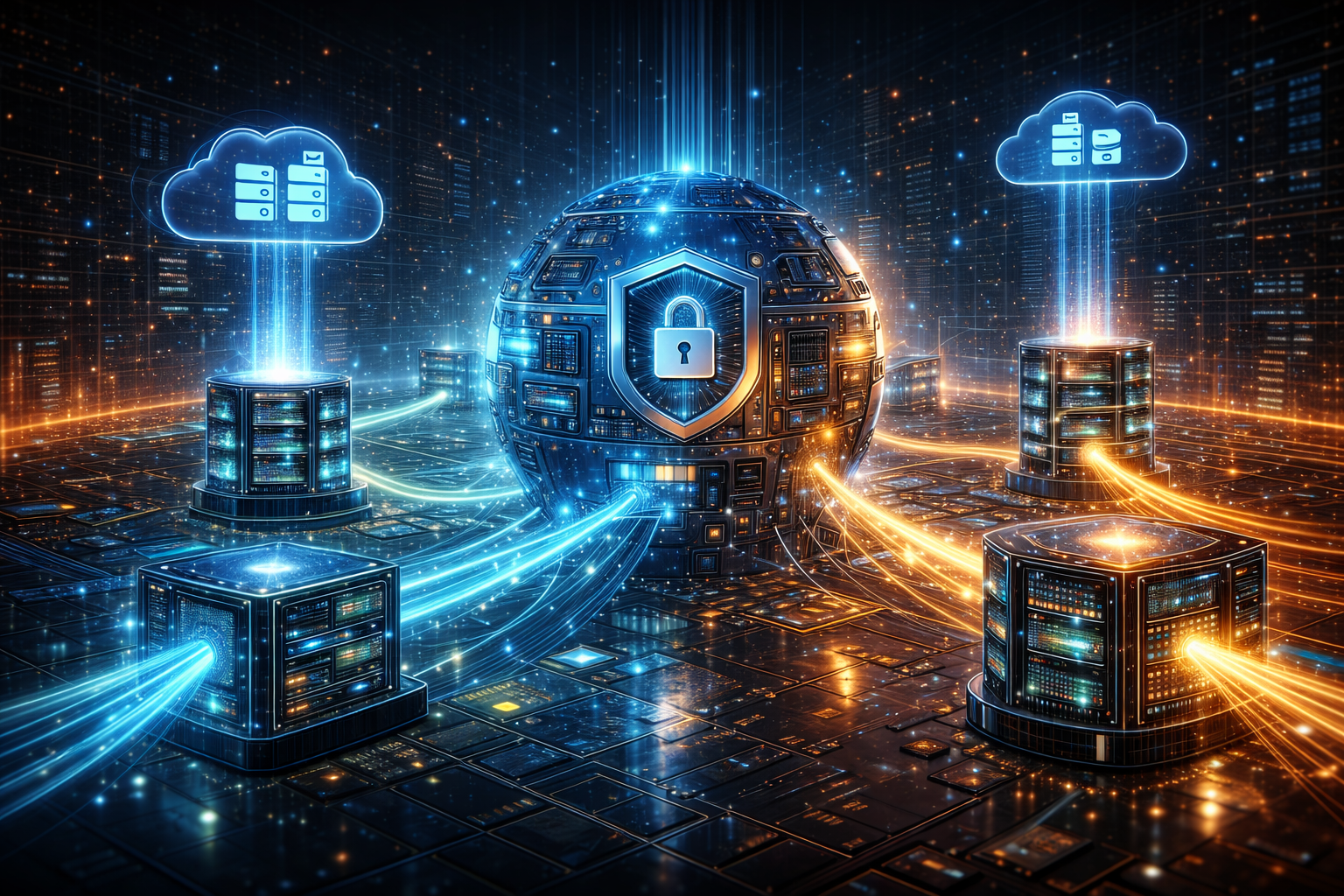
Walrus Protocol has officially entered the spotlight with the launch of its mainnet, backed by a substantial $140 million funding round. The debut marks a significant milestone not only for the project itself, but also for the broader decentralized storage sector, which has been steadily gaining relevance as blockchain applications demand more scalable, verifiable data solutions.
Supported by Mysten Labs, the team behind the Sui blockchain, Walrus is positioning itself as a next-generation decentralized storage protocol designed to handle the growing needs of AI-driven applications, media platforms, and on-chain data-intensive use cases.
Walrus mainnet launch brings decentralized storage into focus
The Walrus mainnet went live on March 27, 2025, signaling the transition from development to full production readiness. Alongside the launch, the project confirmed that it has secured $140 million in funding earmarked for ecosystem growth, infrastructure development, and long-term sustainability.
This funding level places Walrus among the better-capitalized decentralized storage initiatives in the market. Historically, large funding rounds at mainnet launch tend to increase institutional confidence, particularly when paired with clear tokenomics and a defined roadmap. For Walrus, the capital injection is expected to support validator participation, developer incentives, and expansion of real-world use cases.
The protocol operates closely with the Sui ecosystem, leveraging its performance-oriented architecture. This relationship could prove strategically important as projects built on Sui look for native, scalable storage solutions that align with the chain’s low-latency design.
Why Walrus stands out in decentralized data storage
Unlike earlier decentralized storage platforms that primarily focused on file persistence, Walrus is designed around verifiable data availability. This distinction is increasingly important for applications involving artificial intelligence models, dynamic media content, and large datasets that must remain auditable over time.
Traditional decentralized storage solutions often struggle to meet the performance and verification requirements of modern AI workloads. Walrus addresses this gap by enabling developers to prove that data exists, remains intact, and is retrievable without relying on centralized intermediaries. This capability positions Walrus at the intersection of decentralized infrastructure and next-generation data computation.
Industry observers note that this approach could make Walrus particularly attractive for AI training pipelines, decentralized content networks, and blockchain-based analytics platforms that require both scalability and trust minimization.
Leadership and ecosystem strategy
As part of the mainnet rollout, the Walrus Foundation appointed Rebecca Simmonds as managing executive. While detailed public information about her prior industry roles remains limited, the appointment suggests a focus on operational scaling and ecosystem coordination as the protocol transitions into its post-launch phase.
Governance and ecosystem management are expected to play a key role in Walrus’ evolution. With significant funding secured, the challenge now shifts from building technology to fostering sustained usage, onboarding developers, and maintaining network security through decentralized participation.
Market response and token dynamics
Following the mainnet launch, Walrus’ native token, WAL, became available on select trading venues, drawing early market attention. Initial trading activity showed elevated volume, a common pattern during early price discovery phases. While short-term price movements remain volatile, analysts often view such activity as a reflection of curiosity and positioning rather than long-term valuation.
Historically, decentralized infrastructure tokens tend to see more durable demand when network usage grows alongside speculation. For Walrus, the key metric to watch will be adoption by developers and data-heavy applications rather than short-term market performance.
What this means for the broader crypto landscape
The Walrus mainnet launch reinforces a broader trend within crypto: infrastructure is becoming as important as financial primitives. As blockchains mature, demand is shifting toward reliable data storage, computation, and verification layers that support complex applications.
With $140 million in funding, backing from Mysten Labs, and a focus on AI-compatible data storage, Walrus enters the market with meaningful advantages. Whether it can translate those advantages into sustained network activity will determine its long-term impact.
For now, the launch signals that decentralized storage is moving beyond simple file hosting and into a phase where verifiable, high-performance data infrastructure could become a foundational layer for Web3 and AI-driven ecosystems alike.
Blockchain
zkPass (ZKP) Adoption Accelerates After Upbit Listing as Global Exchange Support Grows
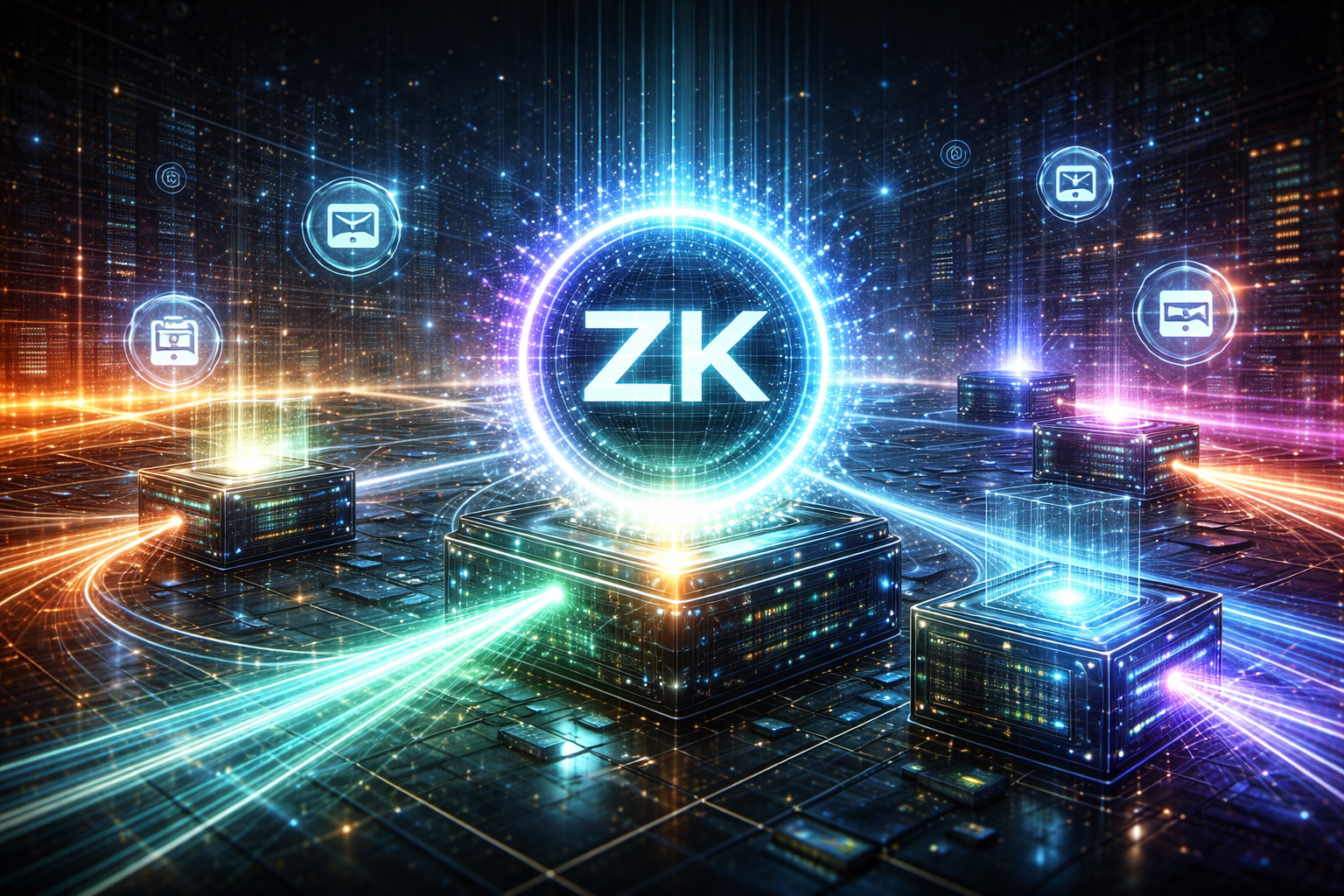
zkPass (ZKP) is drawing increased attention across the crypto market following its recent listing on Upbit, one of Asia’s largest and most influential cryptocurrency exchanges. The move has significantly expanded global access to ZKP while bringing greater visibility to zero-knowledge proof technology, a fast-growing area within Web3 infrastructure.
Rather than triggering short-term speculation alone, the Upbit listing has shifted the conversation toward adoption, accessibility, and the broader role of privacy-preserving technologies in digital identity and data verification.
Upbit Listing Expands Reach for zkPass
Upbit plays a central role in the South Korean crypto market, which is known for high retail participation, deep liquidity, and rapid engagement with emerging technologies. By securing a listing on the exchange, zkPass gains exposure to a large and active user base, alongside stronger fiat on-ramps and improved market depth.
For ZKP, the listing represents more than just another trading venue. It places the token within a regulated, high-visibility environment that often serves as an early indicator of broader market acceptance. Historically, assets listed on major regional exchanges like Upbit benefit from increased discoverability, especially among users who may not actively seek out smaller or niche projects.
The listing also comes alongside expanding exchange integrations elsewhere, suggesting a broader trend of growing platform support rather than a single isolated event.
Why Zero-Knowledge Proofs Are Gaining Attention
The renewed interest in zkPass reflects a wider shift toward privacy-preserving infrastructure. Zero-knowledge proofs allow users to verify information—such as identity credentials or eligibility—without revealing the underlying data. This approach addresses a critical challenge in Web3: balancing privacy with compliance.
As digital identity becomes more central to financial services, gaming, governance, and cross-platform access, tools that enable selective disclosure are increasingly viewed as essential. zkPass operates within this intersection, offering solutions that support user-controlled identity while remaining compatible with regulatory requirements.
Governments, enterprises, and developers are actively exploring frameworks that reduce data exposure while still meeting verification standards. In this environment, zero-knowledge systems are moving from experimental concepts to practical infrastructure, helping explain why projects like zkPass are gaining traction.
What Exchange Support Signals for Privacy-Focused Crypto
Major exchange listings often function as a form of market validation. While they do not guarantee price performance, they typically indicate that a project has met certain technical, legal, and operational criteria. For privacy-focused tokens, this is particularly meaningful, as such projects have historically faced scrutiny or limited access on centralized platforms.
Upbit’s support underscores growing acceptance of privacy-enhancing technologies that are designed to work alongside compliance frameworks, rather than against them. This aligns with a broader industry shift toward “regulatory-compatible privacy,” where users maintain control over their data without removing accountability.
As more exchanges add ZKP, liquidity improves and participation broadens, allowing the ecosystem to grow beyond early adopters and specialized users.
Why Investors Are Watching zkPass More Closely
Market observers are increasingly focused on zkPass not because of short-term price action, but due to its positioning within long-term Web3 narratives. Exchange listings tend to increase visibility, but sustained attention often depends on whether a project aligns with structural trends.
Privacy and identity remain among the most active areas of development in Web3. Zero-knowledge proofs are now considered a core building block for decentralized applications, particularly those involving credentials, access control, and data sharing.
For many investors, ZKP’s expanding exchange presence signals that privacy infrastructure tokens are moving closer to mainstream relevance. The focus has shifted from novelty to real-world use cases, adoption momentum, and integration into broader digital ecosystems.
As exchange support continues to expand and demand for secure data verification tools grows, zkPass is increasingly viewed as part of a larger movement toward privacy-first Web3 infrastructure rather than a standalone speculative asset.
Blockchain
Solana DEX Volume Surges to $1.7 Trillion, Overtakes Bybit in Spot Trading

Solana’s decentralized finance ecosystem has reached a major milestone, with decentralized exchange (DEX) spot trading volume surpassing $1.7 trillion year-to-date, according to data compiled by Artemis. The figure places Solana ahead of centralized exchange Bybit and positions it as the second-largest venue for spot trading globally, trailing only Binance.
The development highlights a notable shift in trader behavior, as activity continues to migrate from centralized platforms toward on-chain markets built on high-performance blockchains.
Solana’s DEX Growth Signals Structural Change
The surge in Solana DEX volume reflects more than short-term speculation. Throughout the year, decentralized platforms on the network have consistently captured market share, driven by improvements in infrastructure, liquidity depth, and user experience.
Solana’s technical design remains a key factor. High transaction throughput and low fees allow traders to execute strategies that would be cost-prohibitive on slower or more expensive networks. As a result, frequent traders, arbitrageurs, and market makers increasingly view Solana DEXs as viable alternatives to centralized exchanges.
The network’s recovery from earlier reliability concerns has also played a role. After periods of congestion and outages in previous years, Solana has delivered more stable performance, helping rebuild confidence among both users and developers.
Protocols Driving the Volume
Several native Solana protocols have contributed meaningfully to the rise in trading activity. Aggregators and automated market makers such as Jupiter, Orca, and Raydium have matured into core liquidity hubs, offering competitive pricing and deep order execution.
These platforms benefit from composability within Solana’s ecosystem, allowing traders to route orders efficiently across multiple liquidity pools. Over time, this has reduced slippage and improved execution quality, narrowing the gap between decentralized and centralized trading experiences.
In addition, growing participation from professional traders has increased overall volume durability. Rather than isolated retail spikes, Solana’s DEX flows increasingly resemble sustained institutional-style activity.
Solana vs. Centralized Exchanges
By surpassing Bybit in spot trading volume, Solana demonstrates that decentralized exchanges can compete directly with centralized platforms at scale. While Binance remains the largest global venue, the gap between centralized and decentralized trading is narrowing.
This trend reflects broader changes in market preferences. Traders are increasingly sensitive to counterparty risk, custody concerns, and regulatory uncertainty surrounding centralized exchanges. Decentralized platforms, which allow users to retain control of their assets, offer an alternative that aligns with these concerns.
At the same time, improved tooling and user interfaces have lowered the barrier to entry for on-chain trading, making decentralized platforms more accessible to non-technical users.
What This Means for Solana’s Future
The $1.7 trillion milestone reinforces Solana’s position as one of the most active DeFi ecosystems in the market. High DEX volume often correlates with stronger network effects, attracting additional developers, liquidity providers, and infrastructure projects.
If current trends persist, Solana’s decentralized exchanges could continue to capture a larger share of global trading activity, particularly during periods of market volatility when traders seek speed and cost efficiency.
More broadly, the data suggests that decentralized finance is no longer a niche alternative. On networks like Solana, it is becoming a central pillar of crypto market structure, capable of rivaling traditional centralized exchanges in both scale and relevance.
As DeFi adoption expands, Solana’s ability to support high-volume, low-cost trading positions it as a key player in the next phase of crypto market evolution.
-
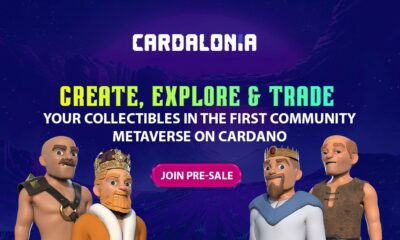
 Crypto4 years ago
Crypto4 years agoCardalonia Aiming To Become The Biggest Metaverse Project On Cardano
-
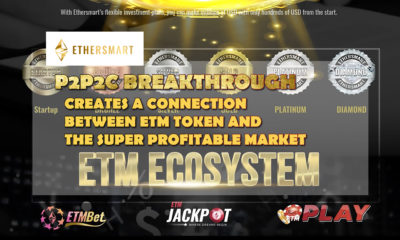
 Press Release5 years ago
Press Release5 years agoP2P2C BREAKTHROUGH CREATES A CONNECTION BETWEEN ETM TOKEN AND THE SUPER PROFITABLE MARKET
-
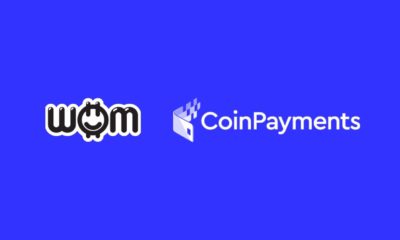
 Blockchain5 years ago
Blockchain5 years agoWOM Protocol partners with CoinPayments, the world’s largest cryptocurrency payments processor
-

 Press Release5 years ago
Press Release5 years agoETHERSMART DEVELOPER’S VISION MADE FINTECH COMPANY BECOME DUBAI’S TOP DIGITAL BANK
-

 Press Release5 years ago
Press Release5 years agoProject Quantum – Decentralised AAA Gaming
-

 Blockchain5 years ago
Blockchain5 years agoWOM Protocol Recommended by Premier Crypto Analyst as only full featured project for August
-

 Press Release5 years ago
Press Release5 years agoETHERSMART DEVELOPER’S VISION MADE FINTECH COMPANY BECOME DUBAI’S TOP DIGITAL BANK
-

 Blockchain6 years ago
Blockchain6 years ago1.5 Times More Bitcoin is purchased by Grayscale Than Daily Mined Coins






